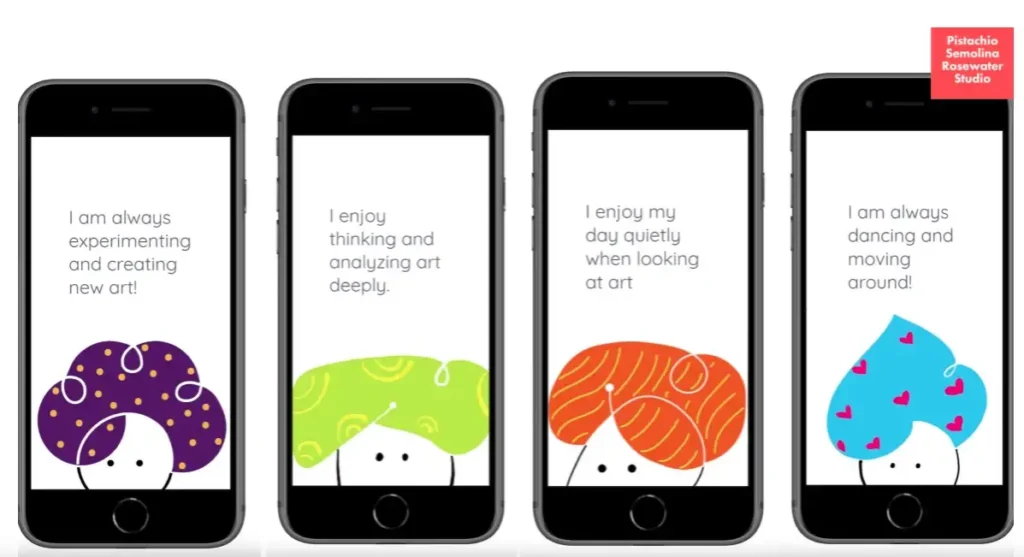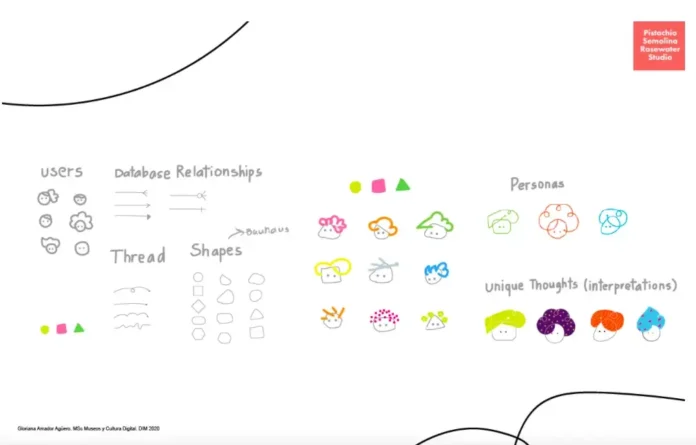This article explores the idea of creating human experiences in museums that connect art, mind, emotions, and body movement in order to promote mutual understanding between cultures and well-being. It introduces Art Thread, a web app that sits at the intersection of technology, museums, and people to bring a rich and meaningful experience to the museum, based on the principles of the visitor-centered methodology. It also introduces four main characters or “personas” to represent the creativity, intellectual, emotional, and physical aspects of experiencing art.

- Izzy represents the creative part of us. She is always experimenting and creating new art. Creativity amplifies our vision of the world and our lives. It provides a place for the imagination, and thus a place to escape from reality.
- Tyler represents a more intellectual side of our experience in the museum. He enjoys thinking and deeply analyzing art. Art is an intellectual experience too. It challenges us to think and interpret the way artists communicate through their art so we can take something from it as well.
- Emi represents our emotions. He enjoys his day quietly while looking at art pieces. Our emotions affect how we live and think, and they have an impact on how we experience art in a museum. Our emotions matter in the way we interpret art pieces because it is an experience that comes within ourselves and thus informs our perception too.
- Liza represents our body. She is always dancing and moving her body around. We bring our bodies into the museum, but what happens when we have to stay at home? We forget to move our bodies, and that causes problems to our health. In Liza’s mind, art can inspire us to move our bodies both at home and in the museum.
During the experience of designing Art Thread, the author came to believe that what makes her experience in art unique inspires her to visit the museum. And that is the message she wants to share with all. For her, a museum experience is a human experience too. And when we design from a mindset that places the value of a human being — their emotions, freedom, and autonomy — at the center when experiencing art in museums, we get the chance to become more relevant to them.
Reflective Analysis
Similar to the correlation between emotions and the interpretation of art, there exists a relationship between emotional well-being and the perception of urban spaces. Through comprehending human emotions, it becomes possible to design urban spaces that foster positive mental health. This article explores the idea of creating human experiences in museums that connect art, mind, emotions, and body movement in order to promote mutual understanding between cultures and well-being. Technology can leverage the creation of a human-centric experience in urban settings, just like the museum experience mentioned.
Source
Wang, H. (2021, December 23). How a human-centered approach to art and emotions reimagines the museum experience. Medium. https://medium.com/@hennawang/how-a-human-centered-approach-to-art-and-emotions-reimagines-the-museum-experience-839b90a43bea




